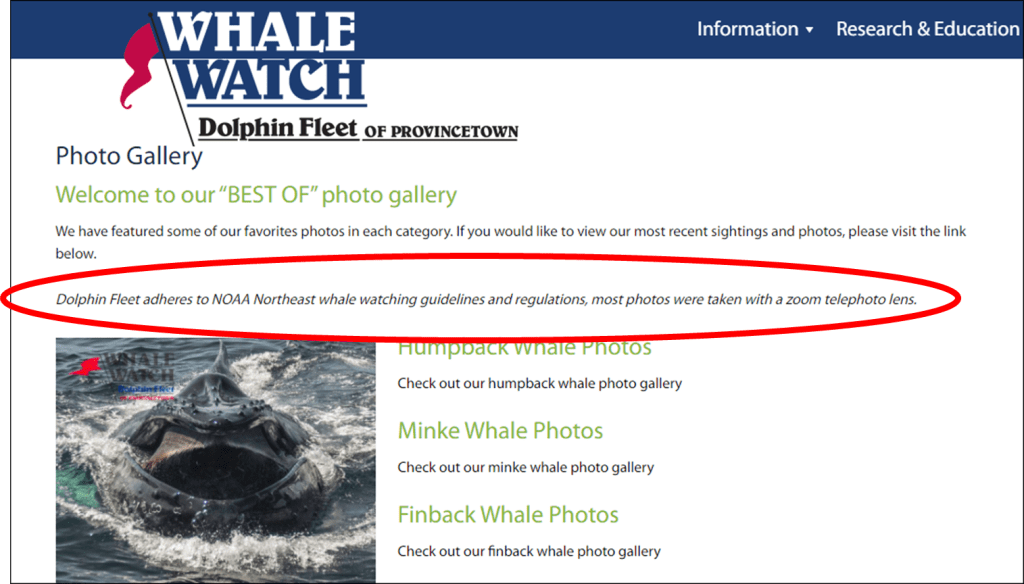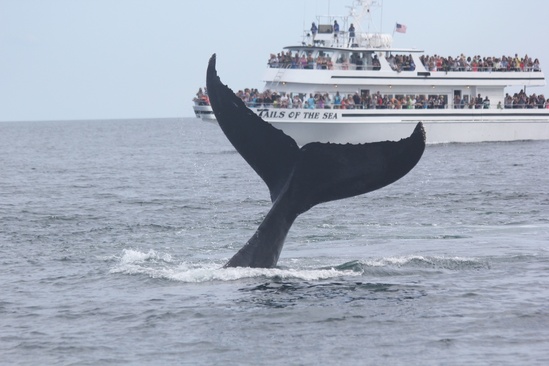Have you ever gone to a restaurant (or more likely in 2020, placed an online order for food) and been told it will be a 40 minute wait? Frustrating, right? Especially when you’re really hungry!
But now think about that AMAZING feeling when it’s only been 25 minutes and your name is called! In this scenario, you were expecting a long wait and when it was shorter, it didn’t seem as bad. That’s because the restaurant knew how to manage your expectations.
This is a key part of whale watching, too! Many people have watched a documentary or other stunning video of whales before going on a whale watch. Their initial expectation may be that they will see that same incredible footage of whales breaching and doing all the awesome things they sometimes do. But they likely don’t know about the many HOURS of filming of whales swimming, breathing, and doing the less exciting stuff that were required to get that perfect shot. In many cases the videographer may even have to get a special permit to even attempt to record that footage because of its potential to disturb the animals.
Federal law prohibits intentional close encounters with whales. These laws are in place so that whales can feed, rest, reproduce – essentially live their best life – without the threat of disruption, injury, or harassment. Whale watching guidelines are in place to help companies make sure they are not violating these laws. We all know how compelling it can be to share an awesome photo or video (did someone say whale selfie?!) on social media. The reality is that following whale watching laws and guidelines should make it difficult to get that “whalefie” – unless of course the whale decides on its own to be a camera hog!
“Responsible advertising” is a requirement for companies participating in Whale SENSE. What exactly does that mean and how can that apply to whale watchers and whale watching staff alike?
Whale SENSE companies commit to helping set realistic expectations by being strategic about what they post on their websites, advertisements, and social media. They also make sure their passengers know that whale watching guidelines exist and that they will be following them throughout the trip. As a whale watcher, you can also support their efforts by being strategic in your own social media and Trip Advisor/Yelp/Google reviews! Here are 3 example scenarios and tips for how to talk about them as a whale watcher:

1. Include information about regulations, guidelines, or the company’s participation in Whale SENSE in your post.
Example scenario: You got an incredible close-up photo of a whale!

- Caption #1: Whales sure behave in incredible ways when given the space to behave naturally! We got some great shots thanks to our whale watch company following the local regulations and Whale SENSE guidelines!
- Caption #2: Check out this amazing shot I got with my zoom lens! Even when we give whales space and follow local regulations and guidelines we can get amazing photos! Everyone should choose a Whale SENSE company!
**Our Whale SENSE companies follow this one too!
2. Post something you learned on the whale watching trip.
Example scenario: You snag a perfect shot of a whale’s fluke!
- Caption: Did you know that humpback whales can be identified by the markings on the underside of their tail? This helps researchers track them over time and learn more about them and their favorite places to hang out. (BONUS: Did your naturalist recognize that whale and share its ID?)
3. Focus on the big picture.
Example scenario: No great photo-worthy moments with whales, but you found yourself in a sea of smiling faces on the whale watch.

- Caption: What an amazing day out on the water! The whales were enjoying their natural environment and did only what they wanted to do. It was a great reminder that the ocean is their home and they (along with their ocean home) are truly worth protecting and conserving! We are lucky we get to see them at all. I highly recommend getting the best experience by choosing a Whale SENSE company like ….
Or better yet, include all three of these tips!
Make sure you are looking for messages like these on whale watch company advertising materials to ensure that you are going with a company that cares about whale conservation!

Feature image (c) Whale and Dolphin Conservation



